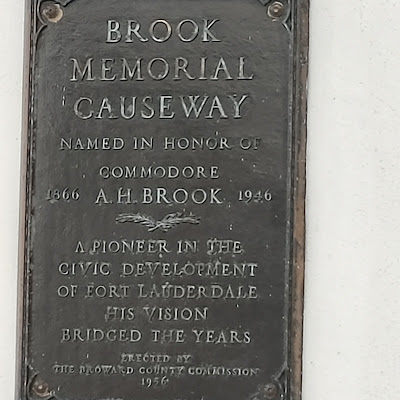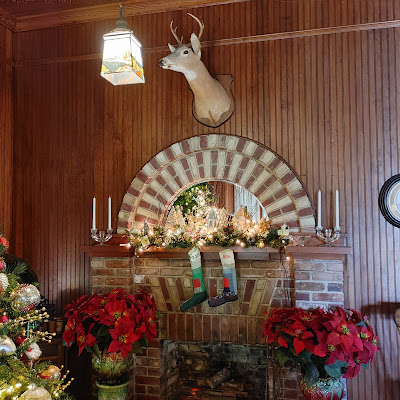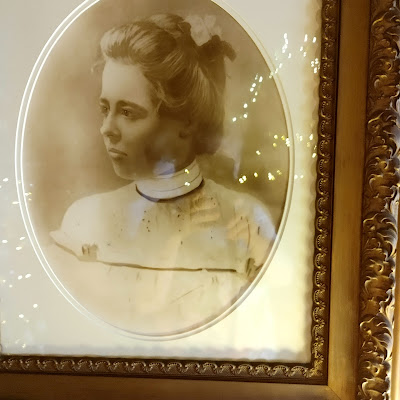 |
| View of the dock from a different direction. It was sprinkling off and on for the first half of our trip but cleared off before we got off at stop #1. |
 |
| Dock to the south side of the causeway was this gigantic yacht. Once we got on the narrated water taxi ride, we were told it is a yacht you can rent. I'm sure the price per day is more than I've made in my entire life. |
 |
| As we waited for our taxi to arrive, we noticed that a door had been opened in the side of the Atlantis and they were preparing to launch a motorboat. |
 |
| Now for a little information on the causeway we were standing under. The history of having a bridge around this location in Fort Lauderdale is interesting and I recommend you read this: https://myfortlauderdalebeach.com/my-ftlb-blog/story-17th-street-causeway-bridge/ |
 |
| Then our boat arrived. Notice it is slightly different than the previous one. There were a variety of boats being use for this water taxi service. |
 |
| Another view of the Pier 66 marina and tower. |
 |
| They seemed knowledgeable about the homes and their occupants along the waterway. |
 |
| This one they called the White House and it was for sale. Can't remember the price but it might have been $33 million. |
 |
| We looked back and saw that the causeway was open. |
 |
| The advantage of having a home along the waterway was to be able to dock your yacht alongside it. |
 |
| We saw this little boat version of the water taxi a couple of times. |
 |
| Las Olas (The Waves) Street also crosses the ICW. |
 |
| The guide asked us what we thought this building was. We were wrong. It's a parking garage. With trees on top! |
 |
| We passed through an area where boats could moor for free. This one sank more than a year ago and still hasn't been removed. |
 |
| These two iguans were making the most of what little sun was peeking through the clouds |
 |
| The pink towers in the background are owned by Tommy Hilfiger. |
 |
| Closer view |
 |
| As we turned to head back down the ICW to make the turn toward stop #1, the skies started clearing. The crew was finally able to get the benches dry enough we could sit on them. |
 |
| This bird was taking advantage of a water level perch. |
 |
| Some of the items the Frank sold and items the Seminole people would trade use for trade. |
 |
| The home was still decorated for Christmas. |
 |
| I was disappointed that I couldn't get a good photo of the light fixture as this one and the one in the previous room were original to the house and very pretty. |
 |
| Ivy |
 |
| Frank |
 |
| These dishes were some of the wedding presents the Stranahan's received from around the world. |
 |
| View back towards the front door. The guide was very, very knowledgeable about the house and its original owners. He told us about the wood in the structure but I can't remember the variety. |
 |
| The building didn't acquire an inside staircase before it became a home. There was a built-in safe under the stairway. |
 |
| The kitchen was equipped with this ice box. |
 |
| Do you have any clue what this kitchen appliance is? Answer at the end of this post. |
 |
| Guests would come with their wardrobe trunks. Bedrooms of this era didn't have closets. |
 |
| Beautiful bed in Ivy's bedroom. |
 |
| This was an electric room heater that stood about 18" high. |
 |
| After Frank's death, Ivy gave over the bottom portion of the home and it was used as a restaurant. |
 |
| Another photo of Ivy |
 |
| A large live oak tree, of which you can just see some of the branches on the left, has been around about as long as the house. |
 |
| To the east of the house, The New River Tunnel, officially known as the Henry E. Kinney Tunnel, carries US Hwy 1 under the New River. |
 |
| Plants in the yard |



























No comments:
Post a Comment